Giochi dell'Oca e di percorso
(by Luigi Ciompi & Adrian Seville)
(by Luigi Ciompi & Adrian Seville)

|
Giochi dell'Oca e di percorso
(by Luigi Ciompi & Adrian Seville) |

|
 |

Torna alla ricerca giochi (back to game search) |
 |
| Kriegs-Spiel (Das) - Le Jeu de la Guerre - The Game of the War - Il Gioco della Guerra | ||
 |
Versione stampabile
 |
Invia una segnalazione

|
 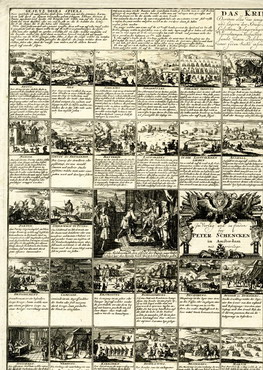 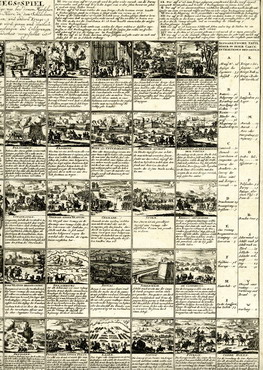 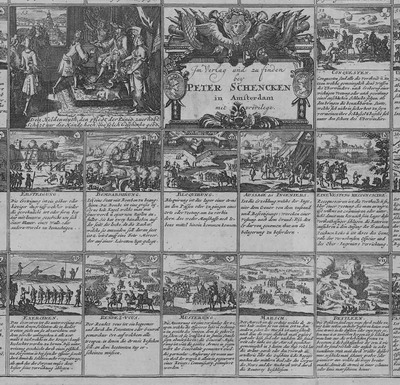 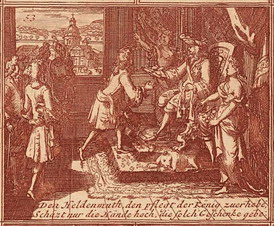 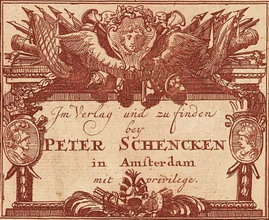  |
primo autore: | De La Boissière Gilles |
| secondo autore: | Schencken, Peter | |
| anno: | 1700ca | |
| luogo: |
Olanda-Ansterdam |
|
| periodo: | XVIII secolo (1°/4) | |
| percorso: | Percorso di 52 caselle numerate | |
| materiale: | carta (paper) (papier) | |
| dimensioni: | 530X655 | |
| stampa: | Acquaforte (taille-douce) (ecthing) | |
| luogo acquisto: | Donazione Lady C. Schreiber | |
| data acquisto: | ||
| dimensioni confezione: | ||
| numero caselle: | 52 | |
| categoria: | Militaria (guerre, armi e soldati) | |
| tipo di gioco: | Gioco di percorso | |
| editore: | Schencken Peter | |
| stampatore: | Im Verlag und zu finden bey Peter Schencken in Amsterdam | |
| proprietario: | British Museum. Donazione Lady Charlotte Schreiber | |
| autore delle foto: | ©British Museum | |
| numero di catalogo: | 2593 | |
| descrizione: |
Gioco di 52 caselle numerate, spirale (rettangolare), antiorario, centripeto. Mezzo carte e mezzo gioco dell'oca questa stampa è destinata ad essere tagliata per diventare carte da gioco oppure lasciata intera per essere giocata come un gioco dell'oca. I semi (cuori, mattoni, fiori, picche) sono conservati su ogni carta. Ogni possibiltà delle carte da gioco è conservata, mentre il gioco dell'oca si svolge sulla stampa stessa. Testo in tedesco, stampa in nero per questo esemplare conservato al British. REGOLE: in alto. CASELLE: con didascalia. NOTA: Il gioco viene ristampato nel 1710 da Daumont a Parigi. Lo schema del gioco è contenuto all'interno della pubblicazione di D’ALEMBERT et alii : "Encyclopédie Methodique Mathematiques" con "Dictionnaire de Jeux", Ed. Panckoucke e Agasse, Parigi 1792 (Tavola n°8). Vedi anche altri esemplari in archivio n°774, n°1159, n°1775 e n°2552 . REFERENZA 1 "British Museum" - © The Trustees of the British Museum 1896,0501.1337 "Das Kriegs-Spiel". Military Science. An uncut sheet with 52 playing-cards copied from Gilles de la Boissière's "Jeu de la Guerre" (see 1896,0501.1308), with German inscriptions. The publisher's address takes the place of the dedication. REFERENZA 2 “Das Kriegs Spiel:” an early military card game DAS KRIEGS-SPIEL. Amsterdam: Peter Schenck, [ca. 1700.] Engraving in sepia ink on laid paper depicting 52 playing cards, each 3 ¼”h x 2”w, plus title and instructions, the whole 18 ¼”h x 22”w at neat line plus margins. Published around 1700, this Kriegs Spiel, or “The War Game,” is a scarce and attractive sheet of playing cards designed to educate young people in the elements of conducting a military campaign. The sheet comprises 53 engraved panels numbered sequentially. All but one is a playing card using the French suits, each bearing an illustration of a military maneuver or fortification element along with a brief explanatory text. Along the top of the sheet additional panels list the game’s rules, and a panel along the right edge contain an index of important terms. A central panel bear the Schenck imprint against an architectural backdrop adorned with military hardware. The sheet could be dissected for use as a traditional deck of cards or left intact for use as a board game, using the rules printed at the top. These appear to be fairly straightforward, involving the rolling of dice to determine one’s moves, the victor being the first to land on panel number 53. Additional rules add spice to the game; for example, anyone landing on panel number 7 (the “defile”) must contribute a penny to a pot before being permitted to exit. By progressing through all the panels, players are exposed in sequence to the various elements of a typical military campaign, from enlistment and training through the final assault and conquest of a fortified town. The final panel “53” bears a vignette of a monarch rewarding a victorious general with a marshal’s baton. According to the British Museum, Amsterdam engraver Peter Schenck based Das Kriegs Spiel on a French edition designed by Gilles de la Boissiere, published by J. Mariette in 1692, and bearing the title Jeu de la Guerre. Boissiere and Schenck each also issued versions of a “Fortification Game” (Jeu des Fortifications / Festung Baues Spiel), which employs a very similar graphic design and set of rules. Games with a military-educational theme are rare, especially from this early date and in complete condition. Featuring Schenck’s refined engraving and printed in sepia, this example is most attractive. References British Museum: 1896,0501.1337 (printed in black). Beinecke Library-Cary Playing Card Collection: 780. (Boston Rare Maps) REFERENZA 3 (D'Allemagne, pag. 221): "LE JEU DE LA GUERRE ou tout ce qui s'observe dans le Marches et Campements des Armées, dans les Batailles, Combats, Sièges et autres actions Militaires est exactement représenté avec les Definitions et les explications de chaque chose en particulier. (Inventé et Dessiné par Gilles de la Boissière Ingenieur ordinaire du Roy et gravé par Pierre de la Pautre). Paris, J. Mariette (1697). Taille-douce 48x67. Jeu de forme rectangulaire à 52 cases se jouant à 52 cartes ou à deux dés et représentant l'enseignement de la tactique militaire. Au centre remise d'un baton de maréchal par Louis XIV d'après le tableau d'Antoine Dieu. Dédié au duc de Berry. Meme jeu, Paris, Daumont (1710). Réedition. Dédié au duc de Bourgogne." Exhibitions: |
|
| bibliografia: |
1) CREPY, Jean Baptiste: “Estampes pour servir à la Récréation de l'Esprit sous la forme du Jeu Royal de l'Oye Renouvelé des Grecs. Pour l'Education des Jeunes Gens de l'un & de l'autre Sexe”. Lesquelles se trouvent à Paris chez Crepy, Rue S.t Jacques à S.t Pierre près la Rue de de la Parcheminerie. A. P. D. R. Paris, 1780ca (contiene 26 giochi rilegati). 2) D’ALEMBERT et alii: "Encyclpédie Methodique Mathematiques" con "Dictionnaire de Jeux", Ed. Panckoucke e Agasse, Parigi 1792. 3) VINCK, Eugène, Baron de: "Iconographie du Noble Jeu de l’Oye". Catalogue descriptif et raisonné de la Collection de Jeux formé par le Baron de Vinck". 126 Jeux du XVIIIe au débùt du XIXe siècle. FR. J. Olivier Libraire, 11 Rue des Paroissiens, Bruxelles, pag. 15, 1886. 4) GRAND-CARTERET, John: "Les jeux d'oie" In "Vieux papiers, vieilles images. Cartons d’un Collectionneur", Le Vasseur&C.ie Parigi (pp. 257-276), 1896. 5) D’ALLEMAGNE,H. R. : "Le Noble Jeu de l’Oie", Paris, Libraire Gruend, (pag. 210) 1950. 6)NEGRI, Ilio - VERCELLONI, Virgilio: "I giochi di dadi d'azzardo e di passatempo dei gentiluomini e dei pirati". Introduzione di Caterina Santoro, Lerici Milano 1958. 7) MASCHERONI, Silvia - TINTI Bianca: “Il gioco dell’oca: un libro da leggere, da guardare, da giocare”, Ed. Bompiani, Milano 1981. 8) GIRARD, Alain R.- QUETEL, Claude: "L’histoire de France racontée par le jeu de l’oie", Ed. Balland-Massin Parigi 1982. 9) DOMINI, Donatino: "Giochi a stampa in Europa dal XVII al XIX secolo", Longo Editore Ravenna, 1985. 10) BUIJNSTERS, P. J. - BUIJNSTERS-SMETS, Leontine: "PAPERTOYS. Speelprenten en papieren speelgoed in Nederland (1640-1920)". Waanders Uitgevers-Zwolle, 2005. 10) PLOCK, Phillippa - SEVILLE, Adrian: "The Rothschild Collection of printed board games at Waddesdon Manor", in XIIIth Board Game Studies Colloquium, Paris, 14-17 April 2010. 11) JACOBS, Rachel: "Playing, Learning, Flirting: Printed Board Games from 18th-Century France". Catalogue exhibition of French eighteenth-century Board Games, 28 March – 28 October 2012, Waddesdon Manor, The Rothschild Collection (Rothschild Family Trust). Rachel Jacobs, Curator. 12) PLOCK, Phillippa - SEVILLE, Adrian: "La Collection Rothschild de Jeux de l’Oie et de parcours à Waddesdon Manor". In "Le Vieux Papier", Fascicolo 404, Aprile 2012, pag. 433- 444. |
|
Vai alla ricerca giochi Vai all'elenco autori